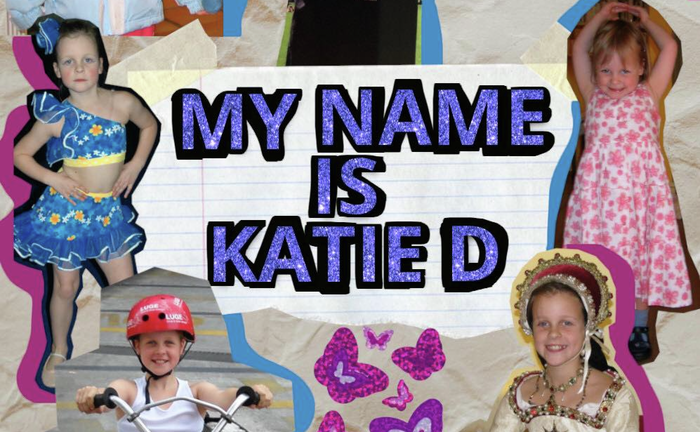The Man Who Sold His Life: “occasionally delightful”
Charlie Butler reviews this week’s enigmatic Corpus late show

Do not be fooled by the straightforward – if somewhat wacky – title of this production. I don’t think that I have ever seen a play which kept me guessing quite like this one did. A testament to this is the fact that when a character confessed to stabbing his ex-wife to death, it took quite some time for me to realise that it was supposed to be a joke and that I wasn’t watching a gritty psychological horror rather than the “intimate, entertaining play about love, friendship and the sheer boredom of everyday life” that I was promised on the booking website.
The plot centres around a woman named Katie (Dominika Wiatrowska) who encounters the eponymous ‘Man’ (Macsen Llewelyn) and agrees to help him get new official documents after discovering that he has sold his own on eBay. The Man’s purpose within the play seems to be to free Katie from the drudgery of her mundane life, although from what I can tell he mainly achieves this by sitting on her sofa watching ‘Tipping Point’ and making her do paperwork for him. The main storyline is interspersed with glimpses into The Man’s previous life, which he shared with his ex-partner Ella (Gwynn Horbury). These intimate, domestic and occasionally delightful flashbacks feel like scenes from a completely different (and, to be honest, probably better) play.
“Much of the dialogue is quite amusing, and perhaps with a larger audience some lines would have received a decent laugh”
The strange plot is somewhat grounded by the simple yet effective set design. A brilliant sense of place is created with just a sofa and two tables, one of which is set up with tea-making equipment and the other a laptop and a phone. Cleverly, this arrangement allows the stage to represent each of the three main settings of the play – an office and two flats – without any need for things to be moved around between scenes, thereby giving the production a slickness which goes some way in making up for the frequently drawn-out runs of dialogue. Similarly, the use of lighting is basic yet well thought out, as by using different washes for events taking place in the past and in the present at least one possible source of audience confusion is eliminated.

What cannot be fixed by lighting design, however, is the writer’s confusion about what kind of play they wanted this to be. The script certainly contains comedic elements – much of the dialogue I keep banging on about is actually quite amusing, and perhaps with a larger audience some lines would have received a decent laugh. However, the mild, largely irrelevant banter which seems to take up an inordinate proportion of the play’s run-time is punctuated with both scenes of intense drama and moments in which the play takes a turn for the philosophical. While I admire the writer’s attempt to create variations in tone and cross the boundaries of genre, the lack of build-up to such moments prevents them from packing much of an emotional punch.
Unfortunately, this stylistic confusion seems to have trickled down into the play’s direction, and this slightly detracts from performances which would otherwise have been nothing short of excellent. Wiatrowska depicts the timid, disillusioned character of Katie with precision and an impressive degree of naturalism. A rather nice touch was the way in which, as the audience entered the venue, she was already positioned on stage at her desk, every bit the bored office worker as she rearranged her laptop and phone into various configurations and waited, like us, for the phone call which would start the play. Sadly, Wiatrowska’s understated style is often eclipsed by the incredible degree of energy and bravado with which Llewelyn portrays The Man. By putting the ‘manic’ in manic-pixie-dream-boy and giving his character a childlike edge, Llewelyn is successful in keeping the audience on-side and playing those comedic moments for all they’re worth – think Hugh Laurie in his pre-House days. Interestingly, in flashbacks, The Man is written as a much more nuanced and believable character, and Llewelyn’s performance adjusts to suit this. He and Horbury act fantastically well alongside one another, and I would go so far as to say that the most compelling scenes are the simple, if somewhat familiar ones which take place between their characters.
This is a play which certainly has its strengths. However, for me, they were sadly not quite enough to hold it together. One of the more tedious chunks of dialogue centres around a recurring nightmare of Katie’s in which she falls off small pieces of furniture, causing her to wake up breathless and terrified. This play similarly falls, screaming, down the gaping abyss that exists between the enticing absurdity of its premise and the almost painfully realistic nature of its execution.
 Music / The pipes are calling: the life of a Cambridge Organ Scholar25 April 2025
Music / The pipes are calling: the life of a Cambridge Organ Scholar25 April 2025 Arts / Plays and playing truant: Stephen Fry’s Cambridge25 April 2025
Arts / Plays and playing truant: Stephen Fry’s Cambridge25 April 2025 Comment / Cambridge builds up the housing crisis25 April 2025
Comment / Cambridge builds up the housing crisis25 April 2025 Interviews / Dr Ally Louks on going viral for all the wrong reasons25 April 2025
Interviews / Dr Ally Louks on going viral for all the wrong reasons25 April 2025 News / Candidates clash over Chancellorship25 April 2025
News / Candidates clash over Chancellorship25 April 2025






